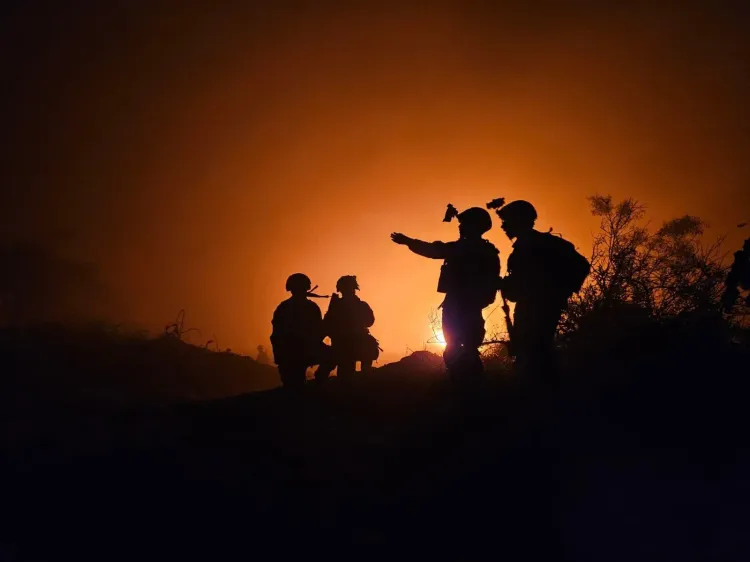What Are the New Shades of 'Proxy War'?

Synopsis
Key Takeaways
- Proxy wars are increasingly common in modern conflicts.
- Influence operations are critical tools in shaping public perception.
- The IT Revolution has transformed the landscape of warfare.
- Understanding propaganda is essential for national security.
- Effective diplomacy and countermeasures are crucial for resilience.
New Delhi, June 29 (NationPress) Wars have always been waged beyond the 'battlefield', employing classic tactics of Espionage, Sabotage, and Subversion executed "covertly".
'Open warfare' has consistently been enhanced by Intelligence operations aimed at evaluating the enemy's strength and war strategies.
Since the end of the Cold War, the global landscape seems to have transitioned into the realm of "proxy wars", where militants and terrorists are discreetly supplied with weaponry to infiltrate enemy territories and plan strikes on vital military and strategic assets, inflicting significant damage. This is often referred to as "asymmetric warfare".
The anti-Soviet military campaign in Afghanistan led by the call for Jehad serves as a prime example of such a conflict, successfully driving Soviet forces out of the nation.
A proxy war economically undermines the adversary, as demonstrated by the Soviet Union's eventual collapse, largely attributed to the financial strain of the Afghan conflict. Interestingly, the year 1991, which marked the disintegration of the Soviet Union, also heralded the success of the Information Technology Revolution, defined by instantaneous communication across borders and the dawn of the Information Age.
This transformation fostered a new level of global competitiveness and ushered in the era of the "knowledge economy".
The IT Revolution paved the way for 'Information Wars', among which 'Influence' operations play a vital role. Influence warfare acts as a strategic tool that utilizes information and communication technologies to sway perceptions, mold public reactions, and achieve political and defense goals, often bypassing direct military engagement.
This involves swaying public opinion to erode the legitimacy of the opponent, employing tactics such as "narrative construction", disinformation, and cyber operations.
In India's context, social media has been exploited by domestic opponents and foreign adversaries—especially the Sino-Pak axis—to undermine the government and tarnish the nation's international image.
China has notably drawn attention for escalating its "influence warfare" tactics by engaging in covert operations to interfere with elections in the United States, its primary rival, aiming to skew results in favor of China.
Kash Patel, appointed as FBI Director by President Donald Trump, disclosed intelligence reports claiming that the Chinese Communist Party (CCP) had produced counterfeit American driving licenses as part of a broader scheme to meddle in the 2020 Presidential election.
The alleged aim was to enable fraudulent mail-in ballots favoring Joe Biden.
In August 2020, US Customs reportedly seized around 20,000 fake driving licenses based on intelligence. Kash Patel submitted these reports to Senate Judiciary Committee Chairman Chuck Grassley for further scrutiny. This revelation follows another significant announcement by FBI Director Christopher Wray in November 2022, stating that the FBI was investigating reports of the Chinese government establishing unauthorized police stations in the US, grossly violating US sovereignty and legal cooperation norms.
Several US citizens of Chinese heritage were reportedly arrested in April 2023 for operating a "Police OutPost" in Manhattan, taking directives from China's Ministry of Public Security to intimidate Chinese dissidents on social media and project a favorable image of China.
These instances are strikingly bold demonstrations of how "influence warfare" is being conducted.
During the recent military skirmish between India and Pakistan, triggered by a terror attack in Pahalgam orchestrated by Pakistan, Chinese state media propagated unverified claims concerning Pakistan.
Pakistan's narrative of destroying a BrahMos missile storage facility in India was circulated, despite India's dismissal as misinformation.
Leading Chinese publications, blogs, and social media amplified narratives supporting Pakistan's actions on the battlefield, insinuating that India's actions could destabilize the region. They echoed Pakistan’s perspective, portraying the nation as "successful" in the military confrontation, bolstered by Chinese weaponry, including fighter jets, missiles, and air defense systems.
While the Sino-Pak strategic alliance actively countered India in the "information warfare" domain, China also collaborated with Pakistan on military fronts.
The lesson for India is to ensure strength not only in self-sufficiency in defense and alliances across the geopolitical landscape but also in being well-informed to counter any propaganda campaigns against us on social media and initiating effective diplomatic strategies for this purpose.
An indirect war is ongoing beyond the battlefield—shaping global opinion against us forms part of the adversary's offensive that requires a suitable response. This adds to the obligations of national intelligence agencies and the diplomatic sector in monitoring the intricacies of "influence warfare".
Following Operation Sindoor, India undertook a rare diplomatic initiative, dispatching seven multi-party teams of MPs and former diplomats—mostly led by opposition leaders—to 32 global capitals, articulating India's stance against terrorism and elucidating Pakistan's complicity in the Pahalgam attack.
As a gesture for peace, India agreed to a ceasefire understanding upon a plea from the Pakistan DGMO—after successfully targeting numerous terror bases in Pakistan-occupied Kashmir and Pakistan in retaliation.
If Trump, approached by a desperate Pakistan Army, advocated for a ceasefire, it should not be interpreted as detrimental to India's image.
The Indian regime must persist in pursuing what benefits the nation.
(The writer is a former Director of the Intelligence Bureau)







